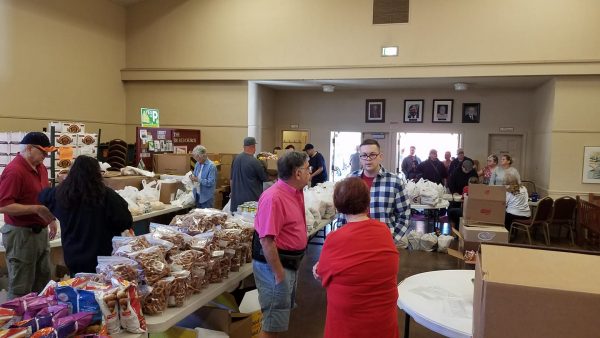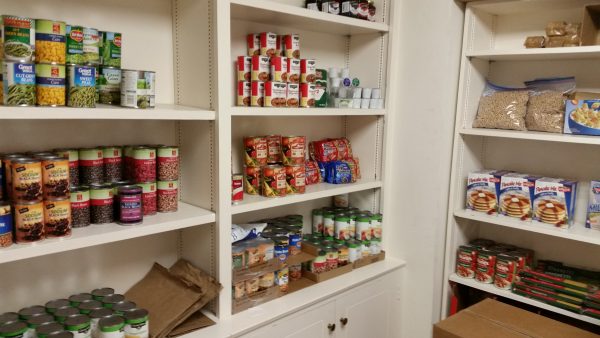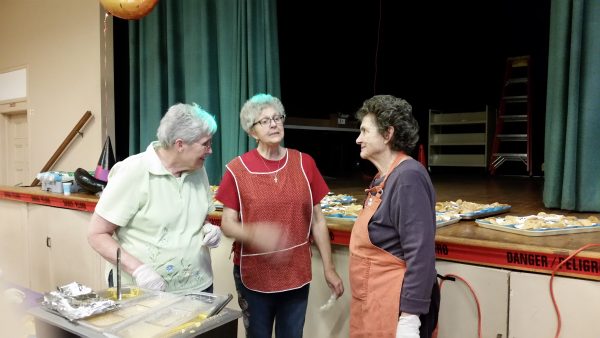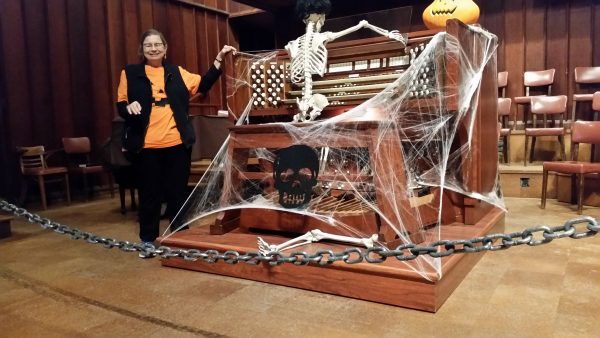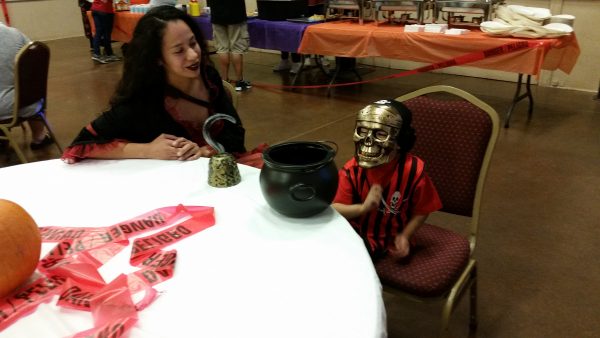A column dedicated to the folks in the pews.
Written by Dale Buchanan
It is Wednesday, October 31, and Halloween is here. Gayle has volunteered to help with serving snacks at the Big Red neighborhood party. As we drive, yours truly is reminiscing about Halloween in his childhood. I grew up in a village seven miles north of Fresno. Halloween was exclusively for children and celebrated in the pleasant autumn streets. There were no sidewalks and no street lights. The only part adults played was to provide candy and be the recipients of our tricks. I remembered that in those days “trick or treat” was more than a polite request. It was understood that those laughing spooks and goblins were actually threatening a trick if there was no treat. This old man smiled in delight as memories of tricks played were recalled as the children of Hi-way City for one night of the year turned our ramshackle village into a magic place where we ruled.
The Halloween party was scheduled from five to eight p.m. Gayle and I strolled in right at four p.m. She went straight to the kitchen for her marching orders. I went into the Fellowship Hall, found an out-of-the-way place, pulled out my pen and notebook, and watched the evening unfold.
My first observation was that a whole lot of preparation was going into this party. My second realization was the presence of what I call “The People of the Pews.” They were busy as bees—organized and efficient. They were in fact a great functioning crew—diverse, happy, and above all each and every one working.
This reporter remains amazed at the involvement of the number of Big Red congregants who step out of the pews to serve the church and the community. The primary focus of this weekly report is on individual members and their stories. However, there are many activities that require a group effort and our dedicated pew people are experts in these social activities. My reluctance turned to delight as I watched these talented folks combine their respective talents to make Halloween happen at the Big Red Church.
At just five p.m. costumed children of all ages, along with their smiling and costumed parents, began to arrive. Traditional Halloween decorations provided a fun atmosphere. The assigned crew members assumed their positions at the serving tables and began to serve the excited children and their happy parents.
From where I sat near an open door, I could hear the strains of spooky music playing. I stopped a busy crew member and inquired. The hurried answer was, “Oh, the organ is haunted.” This I had to see. I stepped outside and heard our pipe organ pealing out traditional haunted music. I walked in the sanctuary and there was our beautiful pipe organ covered in spider webs and being played flawlessly by a grinning skeleton. His legs were lying on the floor, his boney fingers were poised above the keys, and the organ magically produced the haunting sounds of Halloween. Everyone who walked in—from toddlers to seniors—was spellbound.
Meanwhile, back in the Fellowship Hall, the little people dressed in their imaginative costumes continue to arrive in an unbroken promenade. These beautiful children lead their parents to the fantastic feast of hot dogs, nachos, lemonade, and yes, candy treats too. Oh, what fun!
My table, which has remained my solitary observation post, suddenly becomes a coveted place to eat, and I am invaded by a three-year-old pirate accompanied by his smiling parents. Max is an extraordinary swashbuckling rogue. Both hands are holding treasures of Tootsie Rolls. Max is in pre-school and at his swashbuckling best reveals that he has girlfriends. Before losing interest and turning his attention to the hot dog his dad has delivered, Max confesses that he has a treasure map that will lead him to a chest of gold.
The hot dogs are flying off the tables and children transported by their imaginations and costumes transform that room into a magic world as they march leading their parents. Here comes a little pink butterfly rushing along to get her treat. There in his stroller and pushed by his proud dad is Spider-Man.
I have moved outside where Pastor Raygan is being”trick or treated” by the neighborhood children. I remember Jesus saying, “Suffer the little children to come unto me.” Methinks this has happened at Big Red Church this Halloween evening. Families have flocked to this safe and friendly environment, and as they leave they are smiling. One lady in a smiling family group approached me as I sat observing and said, “Thank you. This was wonderful. We got no sermons and no guilt trips. Your church has provided a safe, friendly place for neighborhood families to interact with their neighbors in a relaxed family-friendly environment. Thanks again!”
Dale Buchanan is a member of FCCF with a passion for stories and writing. In between penning his own memoirs, he is helping us get to know our members, one pew at a time.
 I don’t think I’m alone when I say that sometimes out of nowhere I am made wholly aware of the Earth’s moaning as she slowly becomes uninhabitable. Perhaps it’s when I realize how much I miss the flocks of birds. I do miss birds. Maybe it’s when there’s a horrendous fire that consumes beloved forests and innocent people, billowing suffocating smoke that burns my eyes and makes me cough more than usual. I sometimes wonder about the migration of people whose political and natural environment is failing, and how long before I, or my children or grandchildren, will be among them. And where will we go? The Creation is our home … and it is us simultaneously.
I don’t think I’m alone when I say that sometimes out of nowhere I am made wholly aware of the Earth’s moaning as she slowly becomes uninhabitable. Perhaps it’s when I realize how much I miss the flocks of birds. I do miss birds. Maybe it’s when there’s a horrendous fire that consumes beloved forests and innocent people, billowing suffocating smoke that burns my eyes and makes me cough more than usual. I sometimes wonder about the migration of people whose political and natural environment is failing, and how long before I, or my children or grandchildren, will be among them. And where will we go? The Creation is our home … and it is us simultaneously.  On a recent Tuesday, Gayle and I traveled to Clovis for a much-anticipated sit-down time with Alan. His office is on the corner of Ashlan and Willow. Gayle turned on Google maps which directed us to his door at exactly ten o’clock and our appointment. A young lady greeted us at the front desk and Alan came from a back room and greeted us immediately. I sensed from the start a friendly informal atmosphere. That front office was conducive to conversation. Near the front door sat the young woman who greeted us. Between the front door and the reception desk sat two comfortable chairs and out in the middle of the room was a solitary desk. My first thought was this must be where business gets done.
On a recent Tuesday, Gayle and I traveled to Clovis for a much-anticipated sit-down time with Alan. His office is on the corner of Ashlan and Willow. Gayle turned on Google maps which directed us to his door at exactly ten o’clock and our appointment. A young lady greeted us at the front desk and Alan came from a back room and greeted us immediately. I sensed from the start a friendly informal atmosphere. That front office was conducive to conversation. Near the front door sat the young woman who greeted us. Between the front door and the reception desk sat two comfortable chairs and out in the middle of the room was a solitary desk. My first thought was this must be where business gets done.
